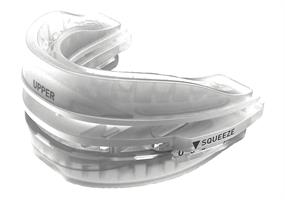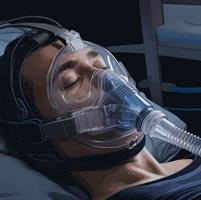Choking while sleeping, snoring, and other nighttime disturbances may seem like trivial issues, but they can have a significant impact on your health and well-being. These nighttime disturbances may be indications of underlying sleep disorders, such as sleep apnea, which require prompt attention and treatment.
Addressing these issues is crucial not only for a good night’s rest but also for maintaining overall health and preventing serious complications.
Take a journey with us as we explore the connection between choking while sleeping, snoring, and other sleep-related problems, learn to identify the symptoms of sleep apnea, adopt lifestyle changes to alleviate these issues, and examine various medical treatments that can help you breathe easier and sleep better at night.
Key Takeaways
-
Understanding choking and snoring during sleep can help identify potential sleep disorders.
-
Lifestyle changes, such as weight management and avoiding alcohol/sedatives, may reduce the risk of choking & snoring.
-
Professional medical treatment is essential to accurately diagnose & treat obstructive sleep apnea in children.
Understanding Choking and Snoring During Sleep
Choking and snoring during sleep may be more than just annoying nighttime nuisances. They can be symptoms of sleep disorders like sleep apnea, which is characterized by interrupted breathing during sleep. Sleep apnea can lead to a host of health problems, including high blood pressure, heart disease, and excessive daytime sleepiness.
Grasping the link between choking and snoring during sleep aids in pinpointing potential sleep disorders and pursuing the right treatment. Recognizing sleep apnea symptoms can guide you towards better sleep quality and overall health improvement.
The Mechanics of Snoring
Snoring occurs when the flow of air through the mouth and nose is partially blocked during sleep. This blockage causes the soft tissues in the throat, such as the soft palate and other tissues in the mouth, nose, or throat, to vibrate against each other, producing the characteristic snoring sound. Various factors can lead to snoring, including:
-
Obesity
-
Alcohol consumption
-
Sleeping on one’s back
-
Nasal congestion
-
The anatomy of the mouth, throat, and sinuses
Reduced muscle tone in the upper airways during sleep can also contribute to snoring. When the muscles in the throat and mouth become too relaxed, they can obstruct the airway, leading to turbulent airflow and vibrations that manifest as snoring. Grasping snoring mechanics aids in identifying potential sleep disorders more effectively and implementing suitable lifestyle adjustments or treatments.
Choking: A Symptom of Sleep Apnea
Choking during sleep can be a symptom of obstructive sleep apnea syndrome, a sleep disorder characterized by interrupted breathing during sleep, also known as sleep disordered breathing.
Sleep apnea can be classified into two main types:
-
Obstructive sleep apnea (OSA)
-
Central sleep apnea (CSA)
OSA occurs when the muscles and soft tissues in the throat collapse and obstruct the airway, while CSA happens when the brain fails to send proper signals to control breathing.
The most prevalent indication of sleep apnea is episodes of choking while asleep, often accompanied by loud snoring, gasping, or producing other atypical noises. Sleep apnea is associated with various risk factors, including obesity, advanced age, male gender, large neck circumference, and certain medical conditions such as hypertension.
Untreated severe sleep apnea can lead to serious health complications for sleep apnea sufferers, such as high blood pressure, cardiovascular disease, type 2 diabetes, obesity, Alzheimer’s, and GERD.
Identifying Sleep Apnea-Related Choking
Detecting sleep apnea-related choking is key for accurate diagnosis and treatment. Symptoms such as loud snoring, gasping for air, and frequent awakenings can help differentiate sleep apnea from typical snoring, which arises from airway vibrations during sleep without breathing interruptions.
If you or your loved one experiences choking or gasping during sleep regularly, it is crucial to consult a healthcare professional, preferably a sleep medicine specialist, for proper assessment and diagnosis.
A sleep study may be conducted to verify the presence of sleep apnea and determine the most appropriate treatment options.
Common Symptoms
Typical indicators of sleep apnea include loud snoring, gasping for air, and sleep apnea episodes characterized by recurrent awakenings during sleep. Loud snoring in a person with sleep apnea is often accompanied by paused breathing, gasping, choking, and shallow breaths, which differentiate it from normal snoring caused by vibrations in the airway.
Less frequent symptoms of sleep apnea can include:
-
Depression and anxiety
-
Difficulty concentrating
-
Erectile dysfunction
-
Uncontrolled hypertension
-
Nocturia
-
Bruxism
-
Lack of restorative sleep
-
Gastroesophageal reflux
-
Other sleep-related disorders
Detecting these symptoms is imperative when seeking professional help and getting the right treatment for sleep apnea.
At Home Diagnostics
While you should seek out professional help if you struggle to breathe at night, there are some ways to get more information on your own. One is to use a pulse oximeter while you sleep. This can tell you if your blood oxygen levels are lower than they should be.
Seeking Professional Help
Obtaining professional help for sleep apnea and related choking is vital for accurate diagnosis and treatment. A healthcare professional will assess the patient’s symptoms and medical history, possibly recommending a sleep study to monitor the patient’s breathing and sleep patterns. This study can be carried out in a sleep lab or at home using portable monitors.
Sleep disorders like sleep apnea can be diagnosed and treated by various medical professionals, such as:
-
Sleep specialists
-
Pulmonologists
-
Neurologists
-
Dentists
Timely diagnosis and treatment can help relieve symptoms, improve sleep quality, and prevent potential complications associated with untreated sleep apnea.
Lifestyle Changes to Reduce Choking and Snoring
Implementing lifestyle changes can help reduce choking and snoring, leading to better sleep quality and overall health. Weight management, altering sleep position, and abstaining from substances such as alcohol and sedatives may be beneficial in reducing choking and snoring. Taking proactive steps to address these issues can lead to improved sleep and overall well-being.
In the subsequent subsections, we will address specific lifestyle changes that can help manage sleep apnea symptoms, including weight management, sleep position adjustments, and substance avoidance. Adopting these changes allows you to take control of your sleep and minimize disruptive choking and snoring episodes.
Weight Management
Weight management is vital in diminishing sleep apnea symptoms and enhancing sleep quality in general. Studies have shown that weight loss, especially shedding excess weight, can lead to a decrease in the number of breathing episodes, a decrease in blood pressure, and a reduction in daytime sleepiness.
A healthy diet, rich in fruits, vegetables, whole grains, lean proteins, and healthy fats, can help improve sleep apnea symptoms.
Research has indicated that low-carbohydrate or Mediterranean diets can be effective for weight management and may positively impact sleep apnea. By maintaining a healthy weight, you can alleviate airway obstruction and improve breathing during sleep, reducing the risk of choking and snoring episodes.
Sleep Position
Altering your sleep position can aid in reducing choking and snoring during sleep. Sleeping on your back (supine position) can aggravate sleep apnea due to gravity causing the tongue to fall back and obstruct the airway.
Conversely, sleeping on your side (lateral position) can enhance pharyngeal patency and help resolve obstructive sleep apnea in some patients.
Positional therapy for sleep apnea is utilized to promote sleeping in a particular position, usually on the side, which can reduce the frequency of apnea events. By adjusting your sleep position, you can maintain an open airway and reduce the risk of choking and snoring episodes during sleep.
Avoiding Alcohol and Sedatives
Abstaining from alcohol and sedatives can prevent relaxation of throat muscles, thereby reducing the risk of choking and snoring during sleep. Alcohol, anti-anxiety medication, and other sedatives can cause relaxation of the muscles in the throat and interfere with breathing, leading to a narrower airway and increased collapsibility of the upper airway muscles, which can result in snoring.
Alcohol can also increase negative arousal and impair the regulation of sleep, resulting in disturbances in breathing during sleep. By abstaining from alcohol and sedatives, you can optimize sleep quality and minimize the likelihood of choking and snoring episodes during sleep.
Medical Treatments for Choking and Snoring
Medical treatments for choking and snoring may include Continuous Positive Airway Pressure (CPAP) therapy, oral appliances, and surgical options such as tissue removal and airway reconstruction. These treatments can help alleviate sleep apnea symptoms, improve sleep quality, and reduce the risk of choking and snoring episodes during sleep.
In the subsequent subsections, we’ll examine various medical treatments for choking and snoring, including CPAP therapy, oral appliances, and surgical options. Understanding these treatments empowers you to make informed decisions about managing your sleep apnea symptoms and reducing choking and snoring episodes.
Continuous Positive Airway Pressure (CPAP) Therapy
Continuous Positive Airway Pressure (CPAP) therapy is regarded as the most common and effective treatment for Obstructive Sleep Apnoea (OSA). A CPAP machine delivers continuous air pressure to the user through a tube and CPAP mask, thus maintaining an open airway and preventing apneic episodes during sleep.
CPAP treatment is effective in preventing choking while sleeping, thus allowing for improved sleep quality and restorative sleep. Various measures can be taken to facilitate the transition to CPAP therapy and to maximize the benefits of treatment, such as proper mask fitting, gradual pressure adjustment, and the use of humidification to reduce nasal congestion.
Oral Appliances

Oral appliances are specially made gadgets that can be worn inside the mouth. Its key purpose is to keep the air passage open while sleeping. They fit comfortably into the mouth, similar to a gumshield, and are designed to:
-
Gently position the lower jaw and tongue forward to reduce the risk of an obstruction causing choking
-
Help prevent snoring
-
Help prevent obstructive sleep apnea
The types of oral appliances used to treat sleep apnea and snoring include mandibular advancement devices (MADs), tongue stabilizing devices (TSDs) and hybrids of both.
Custom-fitting of oral appliances involves the following steps:
-
Taking impressions or molds of the patient’s teeth and mouth.
-
Using the impressions to create a personalized oral appliance.
-
Ensuring that the appliance fits securely and comfortably over the patient’s teeth.
Surgical Options
Surgical options for treating sleep apnea and reducing choking and snoring include:
-
Removing tonsils
-
Removing adenoids
-
Removing excess tissue at the back of the throat or inside the nose
-
Reconstructing the jaw to enlarge the upper airway
-
Implanting plastic rods into the soft palate
The success rate of surgery for treating sleep apnea can vary depending on the specific procedure and individual factors. Studies have reported success rates ranging from 60% to as high as 95%.
Uvulopalatopharyngoplasty (UPPP) or TransOral Robotic Surgery (TORS) can help reduce sleep apnea and snoring by widening the airway and removing obstructions. Maxillomandibular advancement (MMA) is a procedure for reconstructing the jaw to enlarge the upper airway, which can help to alleviate airway obstruction and improve breathing during sleep.
By understanding the surgical options available, you can make informed decisions about the best course of action for managing your sleep apnea symptoms and reducing choking and snoring episodes.
Choking and Snoring in Children
Choking and snoring in children can be a cause for concern, as they may indicate the presence of sleep disorders such as sleep apnea. Identifying the symptoms and causes of sleep apnea in children is crucial for seeking appropriate treatment and ensuring the child’s overall health and well-being.
In the subsequent subsections, we’ll cover the symptoms of sleep apnea in children, delve into common causes such as enlarged tonsils and adenoids, and review treatment options like surgery or CPAP therapy. Understanding these issues allows parents to address their child’s sleep disturbances proactively and foster healthy sleep habits.
Identifying Symptoms
Identifying the symptoms of sleep apnea in children is a vital initial step towards pursuing the right treatment. Typical symptoms include:
-
Snoring
-
Pauses in breathing
-
Restless sleep
-
Snorting, coughing or choking
-
Mouth breathing
-
Nighttime sweating
-
Bed-wetting
These symptoms can have a significant impact on the child’s daily life, leading to excessive daytime sleepiness, fatigue, inattentiveness, and lack of focus.
If your child exhibits any of these symptoms, it is essential to consult a pediatrician who specializes in sleep disorders for proper assessment and diagnosis. Timely identification and treatment of sleep apnea in children can help improve sleep quality, prevent potential complications, and support healthy growth and development.
Causes and Treatments
Common causes of sleep apnea in children include enlarged tonsils and adenoids, nasal blockage due to chronic allergies, and obesity. In many cases, removing the tonsils and adenoids through a surgical procedure called adenotonsillectomy is the recommended treatment for sleep apnea in children. Additionally, your child’s doctor may also suggest using a CPAP or other breathing device to help maintain an open airway during sleep.
Other potential causes of sleep apnea in children may include:
-
Down syndrome
-
Birth defects in the skull or face
-
Cerebral palsy
-
Developmental delay
Understanding the causes and treatment options for sleep apnea in children enables parents to take suitable steps to tackle their child’s sleep disturbances and ensure a healthy, restful sleep.
Summary
Choking and snoring during sleep may seem like mere annoyances, but they can be indicative of underlying sleep disorders such as sleep apnea. Addressing these issues is essential for maintaining overall health and preventing serious complications.
By understanding the relationship between choking and snoring during sleep, recognizing the symptoms of sleep apnea, adopting lifestyle changes, and exploring medical treatments, you can take control of your sleep and minimize disruptive nighttime episodes.
Remember, a good night’s sleep is crucial for overall health and well-being. Don’t let choking and snoring go unaddressed – take the necessary steps to improve your sleep quality and enjoy the restorative rest you deserve.
Frequently Asked Questions
Why do I wake up choking from snoring?
Your snoring likely indicates Obstructive Sleep Apnoea (OSA), where the airway is partially or completely blocked and causes pauses in breathing. This drops your oxygen levels, prompting you to wake up choking or gasping for air as the body responds to the lack of oxygen.
How do you stop choke snoring?
To stop choke snoring, adjust your sleeping position to avoid sleeping on your back and modify your lifestyle by reducing alcohol intake, avoiding smoking, and maintaining a healthy diet.
What does it mean if you keep choking in your sleep?
Choking in your sleep is usually caused by Obstructive Sleep Apnoea, where the airway becomes partially or completely blocked and oxygen levels in the blood can drop. This results in waking up choking or gasping for air as the body responds to the lack of oxygen.
Are there specific lifestyle changes that can help reduce choking and snoring?
Yes, lifestyle modifications such as weight management, changing sleep position, and avoiding substances like alcohol and sedatives can help reduce choking and snoring.
How can I tell if my child's snoring is a sign of sleep apnea?
If your child snores, has pauses in breathing, is restless during sleep, snorts, coughs or chokes while sleeping, mouth breathes, sweats at night, or bedwets, they may be displaying signs of sleep apnea.






